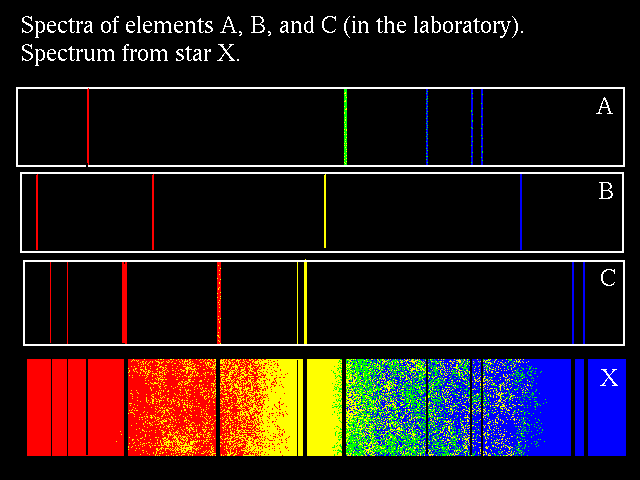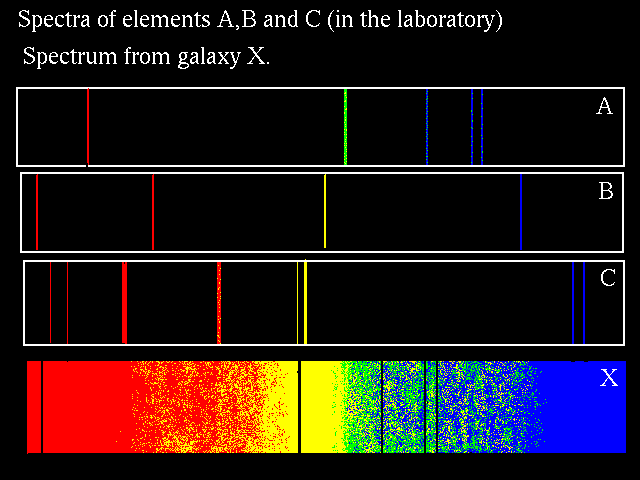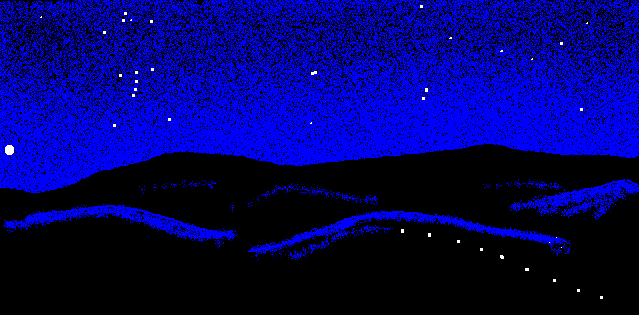Problems for 22 April 1996
You can hand in the following problems at beginning of class on Monday
22 April. If you have more than one page, please staple them together.
And don't forget to include your name. Also, please write at the top
near your name that these are the problems for 22 April.
Please do the following problems, S1) - S8), that review what we have
been doing in class.
- S1) How can one tell what stars are made of?
- S2) What are the two main ingredients of our star, the Sun.
- S3) The Earth is made of iron, silicon, oxygen, ... . We are made
of carbon, nitrogen and oxygen mostly. Are these elements found at all
in the Sun?
- S4) Where does the energy come from that makes the Sun shine? Is
anything used up? Is anything made?
- S5) How does the energy output from the reactions that make the Sun
shine compare to the energy output from chemical reactions that we use,
for example, to boil water using a gas stove? (Compare energy output per
atom or per kilogram of fuel. Just a very rough number is good enough here.)
- S6) Suppose that elements A, B, and C make spectra in the laboratory
as shown below. Also shown is the spectrum from Star X. Which of the elements
A, B, and C are present in the atmosphere of Star X? How do you know?

Suppose that you looked at the spectrum of a star in a distant galaxy
and found the following. What could you conclude about the composition
of light absorbing gas in the galaxy and about the galaxy's motion?
 S7) Suppose that you see a 8000 W streetlamp on a distant hill. You
measure the apparent brightness of the streetlamp to be 0.000002 W/m2. How far away is the hill? (An approximate answer is OK. In particular, you cam approximate 4 Pi = 12.566 by 10.)
S7) Suppose that you see a 8000 W streetlamp on a distant hill. You
measure the apparent brightness of the streetlamp to be 0.000002 W/m2. How far away is the hill? (An approximate answer is OK. In particular, you cam approximate 4 Pi = 12.566 by 10.)
 S8) Behind the distant hill is the sky, and in the sky is star X. Because
star X is a special type of star, you know that its luminosity is 8 x
1027 W. You measure the apparent brightness of star X to be
2 x 10-10 W/m2. How far away is star X (in
meters)? How many light years it that? (An approximate answer is OK. In
particular, you cam approximate 4 Pi = 12.566 by 10 and you can approximate
the number of meters in a light year = 0.94 x 1016 m by
1 x 1016 m.)
S8) Behind the distant hill is the sky, and in the sky is star X. Because
star X is a special type of star, you know that its luminosity is 8 x
1027 W. You measure the apparent brightness of star X to be
2 x 10-10 W/m2. How far away is star X (in
meters)? How many light years it that? (An approximate answer is OK. In
particular, you cam approximate 4 Pi = 12.566 by 10 and you can approximate
the number of meters in a light year = 0.94 x 1016 m by
1 x 1016 m.)
Davison E. Soper, Institute of Theoretical Science,
University of Oregon, Eugene OR 97403 USA
soper@bovine.uoregon.edu



